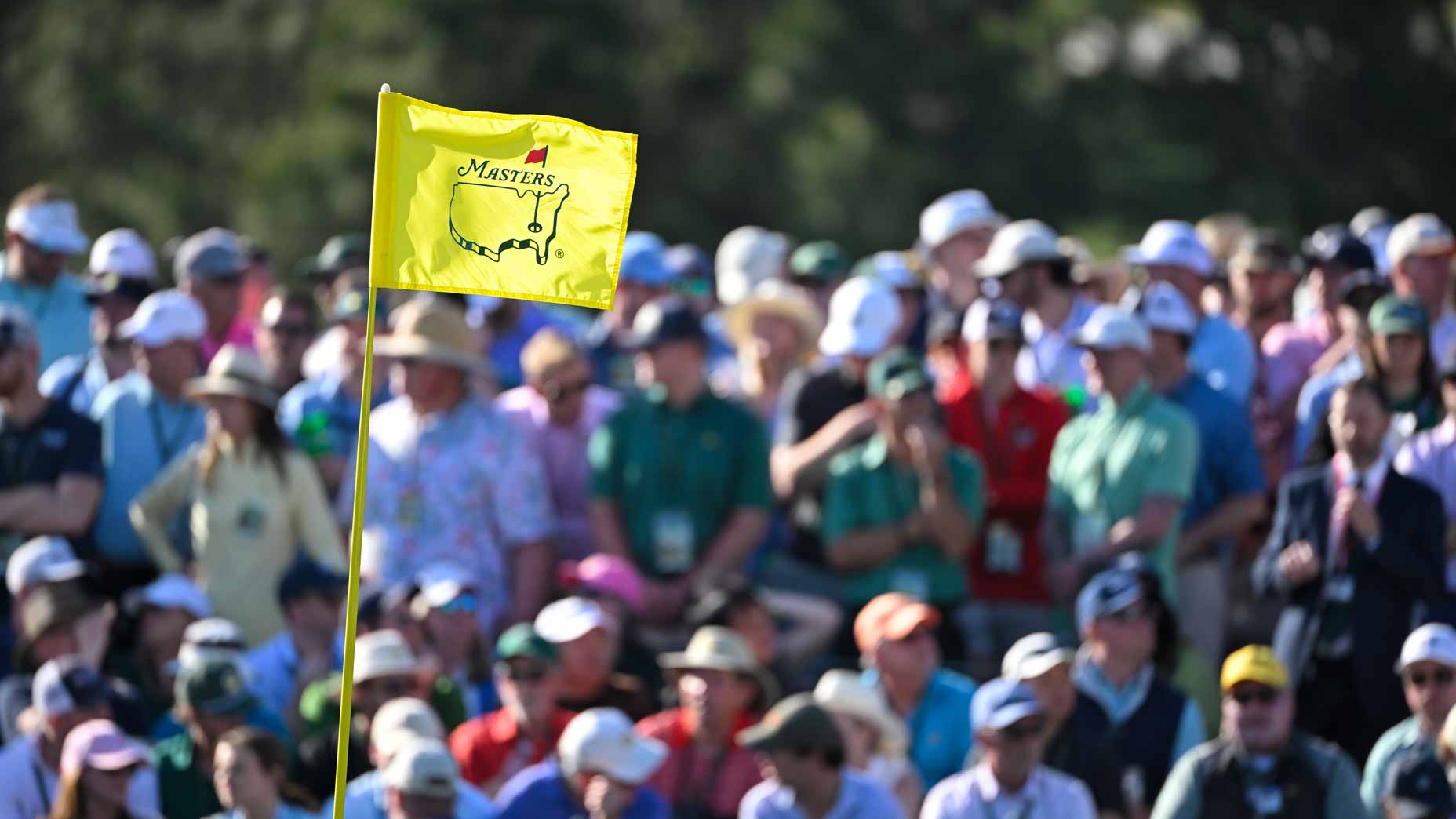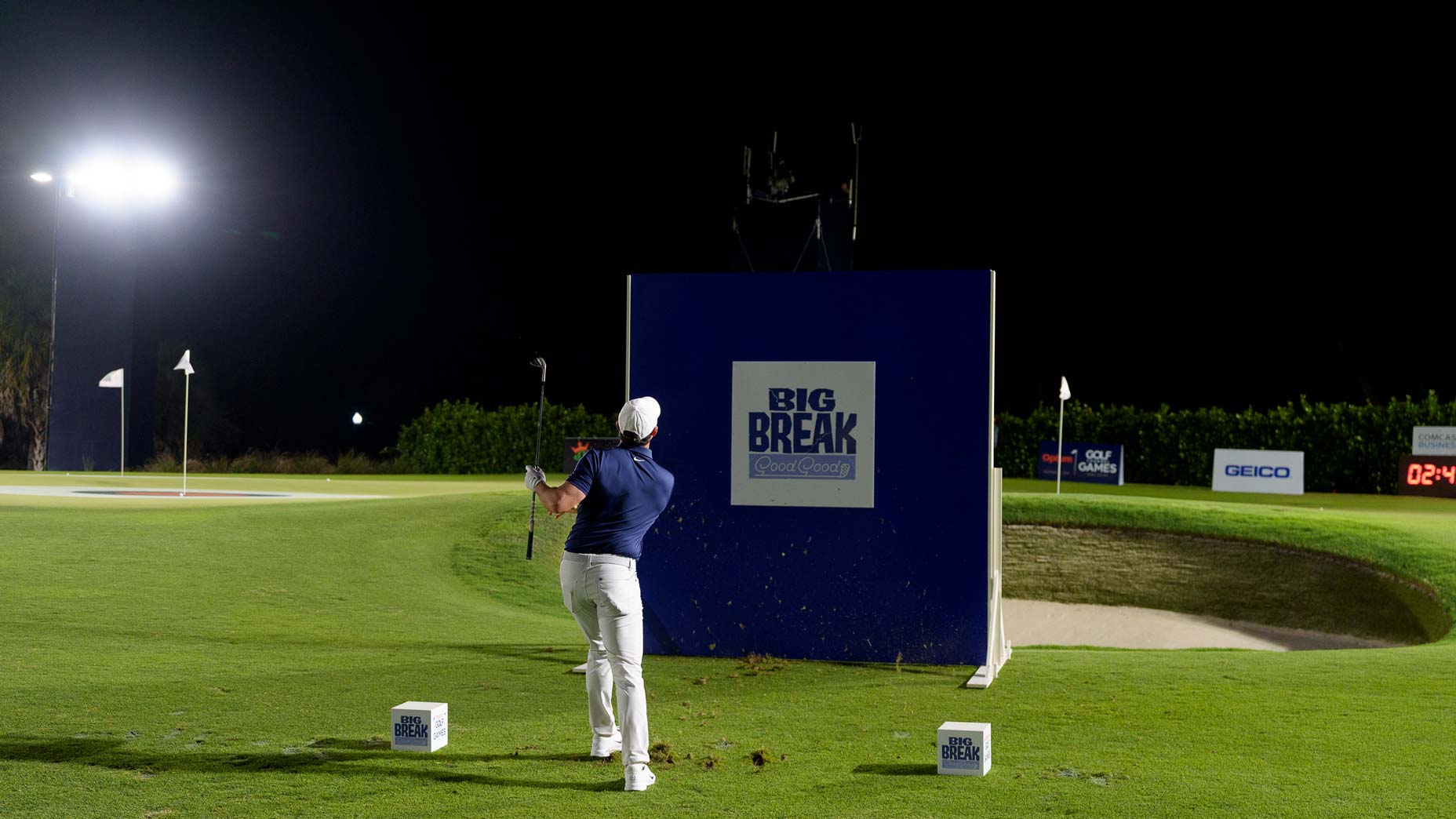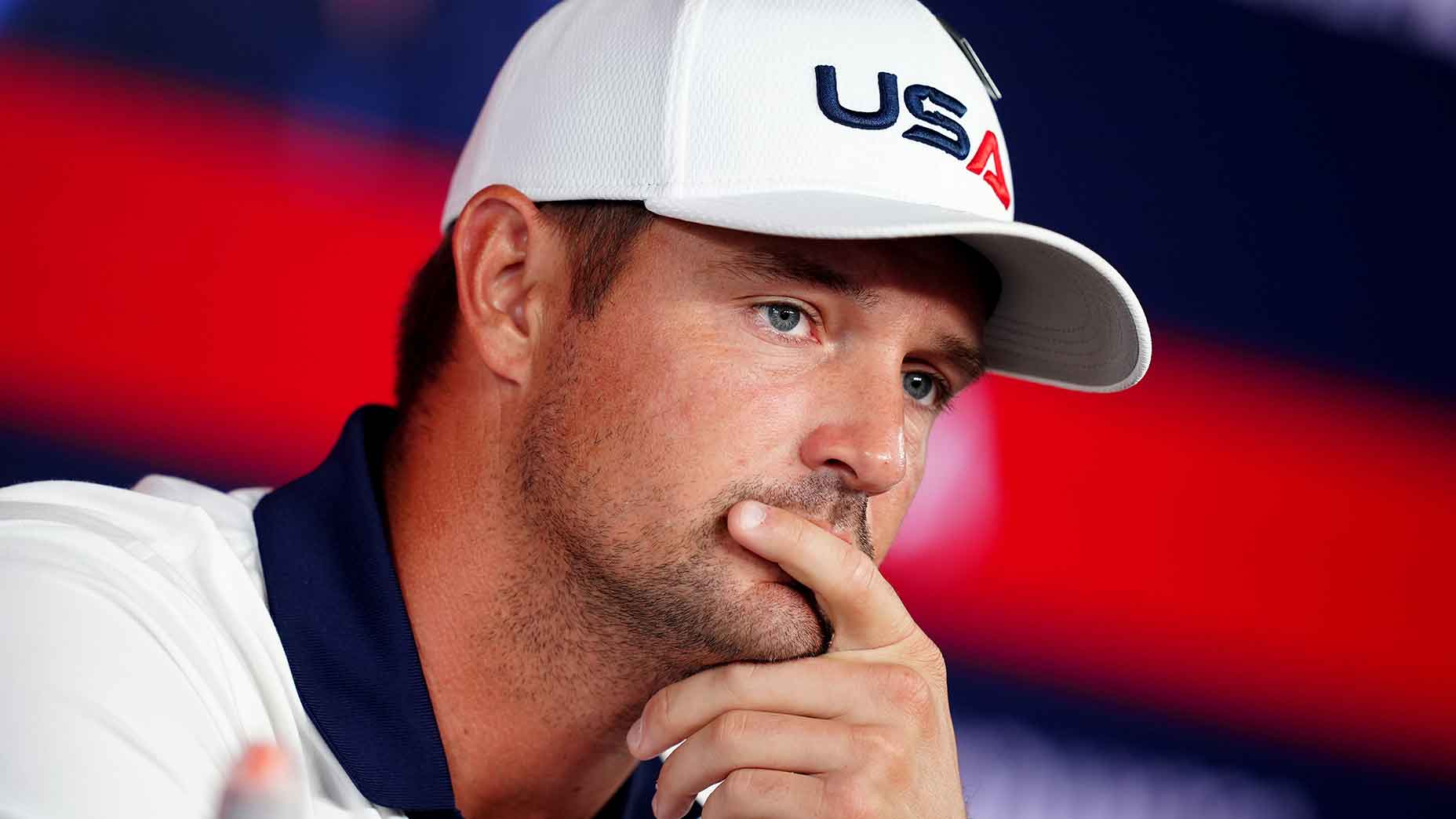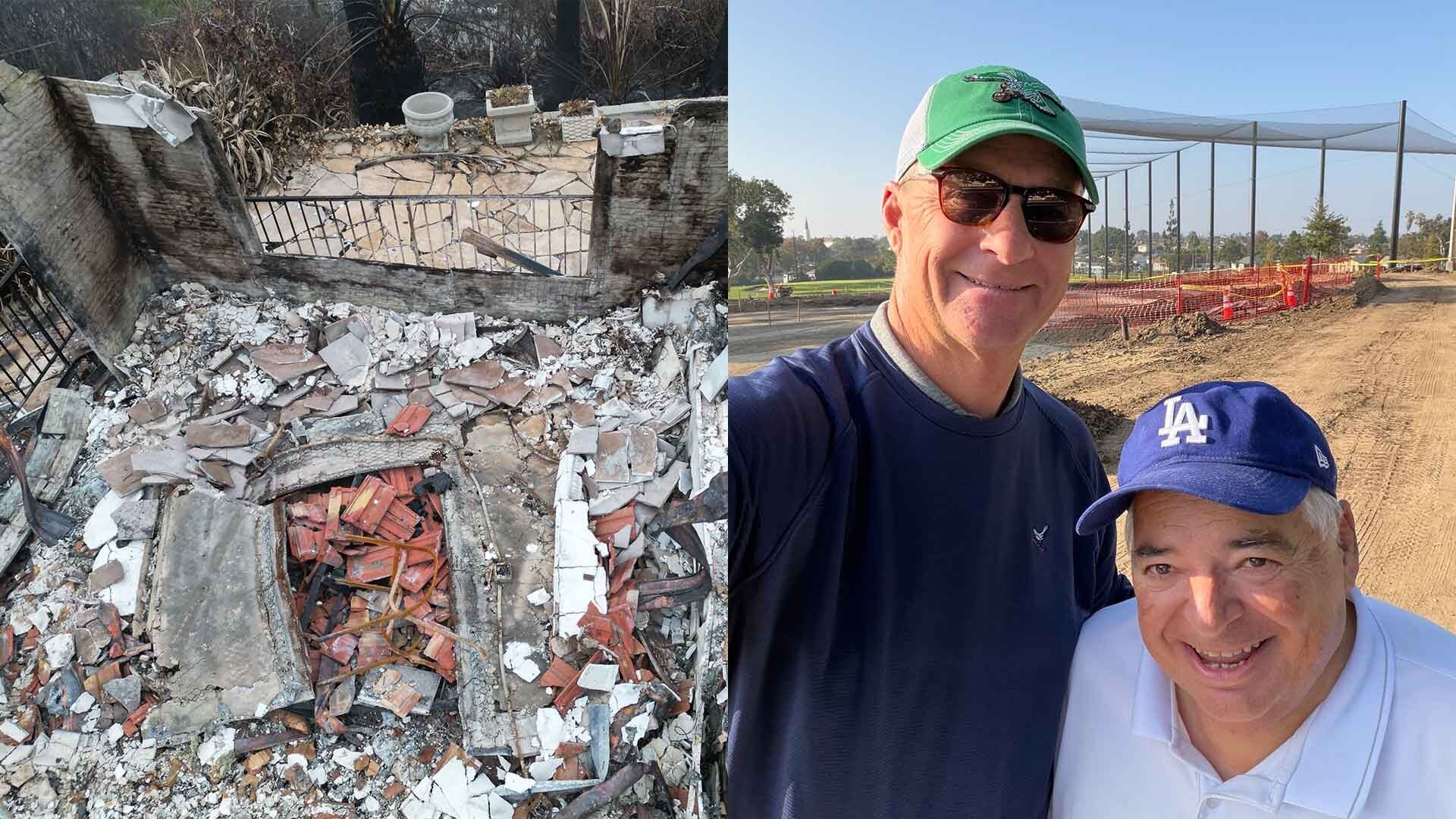ORLANDO, Fla. — Francesco Molinari didn’t leave himself much time to bask in the glory of his dream season. Just months after he won the Open Championship, two marquee worldwide events and went a spotless 5-0 in the Ryder Cup, Molinari began the process of working his way into a completely new equipment setup.
Nobody would have blamed Molinari if he decided to stick with his previous setup, but after nearly three years as an equipment free agent, the 36-year-old felt it was time to make a move. Following months of extensive testing with Callaway representatives, he made the switch official at the Arnold Palmer Invitational, inking a multi-year deal for all 14 clubs and the golf ball.
During a recent sit-down with GOLF equipment editor Jonathan Wall at Bay Hill, Molinari went in-depth on his new equipment, why he felt it was time to leave the free agent market, and what surprised him the most about Callaway’s Chrome Soft ball.
Coming off a career year, how difficult was it for you to change every club in your bag?
Francesco Molinari: It wasn’t too difficult to be honest. Obviously, I was a free agent last year, and when it came towards the end of the season, I decided to try and test around a little bit, and see what different companies had in their portfolio. With Callaway, it was pretty much a dream start from the beginning. The guys in Europe were, when we started shopping, were obviously very happy for me to try new things. We started, I think it was around October time last year, before the Race to Dubai, and I was very impressed with the staff from the beginning.
The biggest question mark for me, in general, was the ball. It’s the most delicate thing to change and I was impressed and probably a little surprised. You always assume you’re playing the best, and when you test other things, it’s nice to get a little surprise. Pretty much from the start, the ball speed was better, the spin was very similar, the feel around the greens was a little bit softer. So it was a win-win situation.
So there was no emotional attachment to your previous setup?
Molinari: I’m lucky enough to be a guy that doesn’t get particularly attached to, emotionally attached to clubs. Even last year, I think I went through three different drivers and tinkering with the shaft weight a little bit. I’m pretty used to playing with something that looks and feels slightly new. It’s been pretty smooth so far.

How much equipment did you test as you were considering signing with a manufacturer?
Molinari: I had the experience of the, two, two and half years ago, when Nike got out of the equipment business, and for guys like me that have been with them for a long time, it was an opportunity but a challenge as well, because you all of a sudden were open to so many options that I started, at the time, with the idea to test as much as possible. And after two weeks, I realized that that wasn’t really possible because there’s so many variables, and you just, after a while, I think you get to a point when it’s just confusion, and there’s too much things going on to really understand. But this time, I didn’t test quite as much, partly because I had an idea from three years before of what was around.
But to answer your question, I did test a little more than just Callaway. The performance that I got with these clubs was clearly the best, so it was a good combination obviously for me to see the clubs that I like the most were from a company that obviously wanted to get involved with me, and that’s a nice feeling as well. To have someone that wants to work with you and at the last point, was probably that I saw in them, more than in anyone else, the will and the desire to get back there and to get me playing even better golf. I wanted to find someone that wasn’t just gonna say, “Oh, let’s keep everything the same because you had a great year.” So it was nice to see that same spirit in them, like I had in me.
What was that testing process like for you with the golf ball?
Molinari: Yeah, I think it was probably slightly easier than I thought. I had heard, in general, the reputation that the Callaway ball was quite a spinny ball, which, for guys like me, is probably not necessarily a great thing. The first testing we did in October was basically testing the new driver, the first few heads were just coming out, and the ball together; compare it with the driver ball combination that I had last year, and the jump in speed was immediate. So that’s the first positive that you see. And then, I just started back then when I was at home, playing around a little bit with the ball and comparing it with my old clubs, comparing to what I had. And I saw the spin and the performance were very similar, apart from a little more ball speed I was getting with Chrome Soft, which is always a good thing.
The other surprising thing was that the feel around the greens was softer than what I had. So if anything, it went smoother than I thought because all the important factors, like spin, and feel, and stuff like that, were fine. And on top of that, I was getting a little more ball speed. First week I played with it was in [Maui], where the wind there can be difficult, and it performed really well in those conditions. That really put me at ease.
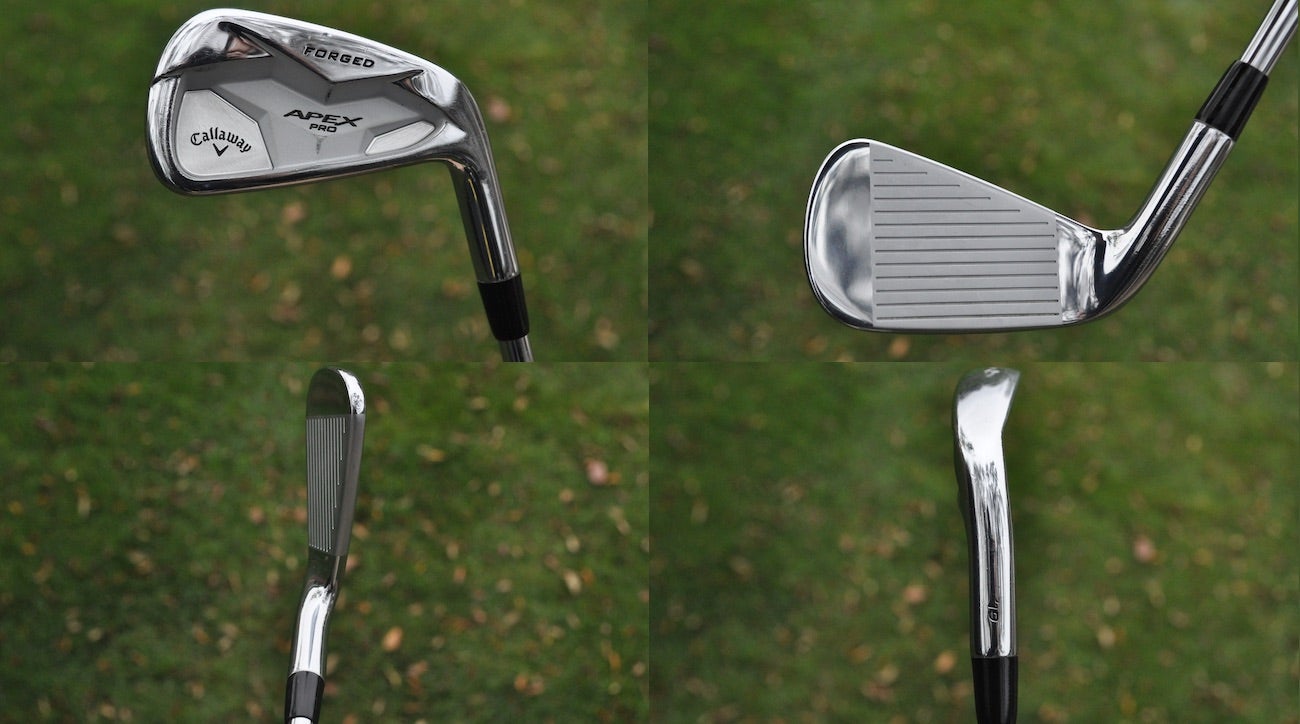
Is there a go-to shot when you’re ball testing that you need to execute for it to pass the test?
Molinari: I’m quite a simple guy, so I tend to hit a few, maybe wedges, a few 8-irons, a few 6-irons and just go on up to the driver, just to see that the spin is in the right window where you want it to be. And then you compare ball speeds to see if they’re any different. So it’s not too complicated, but it’s not often that you find the ball that’s immediately in the right window.
What about driver testing?
Molinari: I had tested some Callaways two-and-a-half years ago when it was time for me to look at new equipment. I was pretty convinced that I was playing the best that was out there. So it was impressive and surprising to see the ball speed going up immediately on a consistent basis, on every shot.
When I sat down with the guys that were telling me about the different driver heads, and they immediately talked to me about the three diamond head that is the one that I’m using now, saying that they thought, from the initial testing, it was probably the one that most [Callaway staffers] would use. They brought me that and they brought me a couple of the other heads, but pretty soon, I realized that they were right and it was the best head for me.
What’s your optimal spin for a driver?
Molinari: I like it to be anywhere from 2,5oo to 2,600 RPMs. Obviously, for me, control is quite a big thing, so I don’t want to spin it too low, risking losing a bit of control. So because of that, we’ve had to change shafts in the driver and 3-wood. I think in general that they’re lower spinning heads than what I had before, which I think it’s a good thing for us players because you’re always kind of trying to keep the spin down. And if the spin is too low, you’ve got loft, you’ve got shafts, you’ve got many options to bring it back up to the optimal level. If they spin too much from the get-go, it’s many times harder to bring the spin down. So, yeah, it was, again, pretty easy.
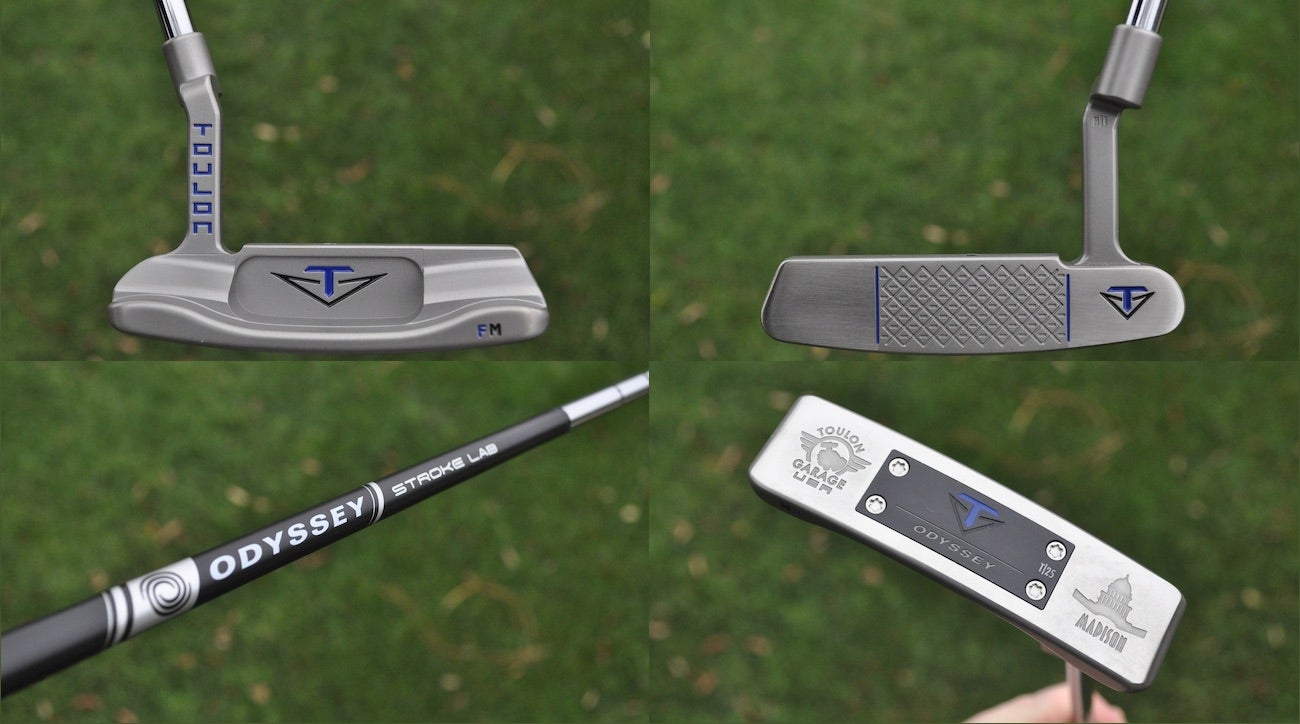
You putted unbelievably last season. Was the putter the most difficult club to swap out?
Molinari: Last year’s putter had a special place in my heart. There was definitely an improvement in putting, but I think it was due more to the technical side, the technical work. But when you perform with one club in an area where maybe I haven’t performed so well in the past, it’s not so easy. So I had a chat with Phil Kenyon, my putting coach, and asked his opinion if he thought it was gonna be a problem, and he was pretty positive from the start. This is actually the first putter they gave me. I think it was, maybe November, December, back home in London, and seeing as they sent me a few different heads and different prototypes. But this has been so good that I’ll stick to it. The club head obviously is very similar to what I had last year.
Did the Stroke Lab shaft take any getting used to?
Molinari: Not really. The feeling is a little bit different, but again, it was pretty good from the start. So when you see you’re making putts and you’re controlling the speed, that’s all you want to see. The feel is different. You can feel it being more stable. I think about last year, especially longer putts, you could feel a little more movement in the shot, which is something probably you get used to. But it is now, feels like it is easier to deliver the clubhead where you want it just because it feels more stable. It’s an interesting feeling. I think it’s not often you see something really new in putters. It was great to have the chance to test it and then to use it. I think we’re seeing a lot of guys using it out here and it’s just because it’s better than what we had before.
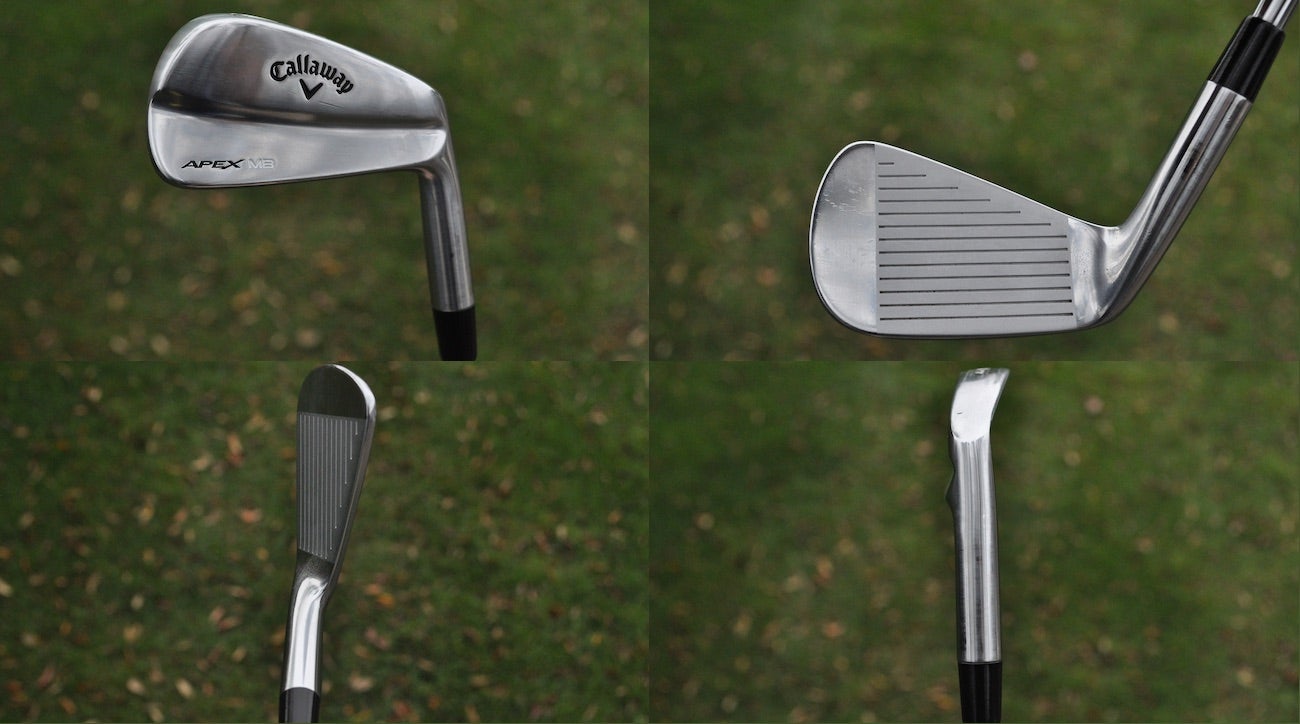
You went from cavity-back irons to Apex MB muscleback blades. What made you move away from the extra forgiveness?
Molinari: I’ve been, on and off, playing blades throughout my career. I think what I found was that the last blades that I played with Nike were kind of in between blades and cavity backs, so when I switched to TaylorMade two years ago when I was testing, they just gave me a set of cavity backs. And I hit them, they were fine. I’m that sort of guy. If it works, I don’t get too into it. But then, once I started testing, we tested the blades, and the numbers were great. I loved the feel of the sole through the ground.
These [Apex MB] forged blades are made, I think, in Japan, so they’re slightly different from the standard muscleback. I had the standard blade at [the Sentry Tournament of Champions], so this is brand new. I played with it in Mexico. I got it three days before Mexico, hit them for two days, and then put them straight in the bag.
Did you add the Callaway Apex Pro 4-iron strictly for the forgiveness?
Molinari: I’ve got a blade 4-iron as well, but so far, I’ve been [the Apex Pro]. I need a little bit more ball speed as well to bridge the gap between the five and the utility. It’s a set up that I’ve had for, I think, three years now, without a 3-iron, just because I prefer to have more options down in the wedges.

Have you always used a setup with four wedges?
Molinari: I’ve been using four wedges for four years now. I used to have a 53- and 58-degree, but then I realized, I think that the way that the game is you hit a lot more drivers and wedges into holes. And it’s good to have tighter gaps and to make it easier down there, you can control the spin with different clubs.
I’ve really taken to the wedges. Even last year, I wasn’t contracted or anything, I decided to play the 60-degree, and it was very good. So then I’ve got 56 and 50, which is kind of more standard grinds than the S grind, just because I don’t use them that often around the green, to be honest. And if I do, it’s just for low bump and grounds, so you don’t play around with opening the club face. And it’s good to just have a straighter bounce.
Do you change your wedge gapping at all over the course of the season?
Molinari: I did last year. I used to have 52, 56, and 60. And then, this shows you who I am, on the Tuesday in Augusta last year, we were thinking that the gap between the 52 and the pitching wedge was too big, so I just switched into a 50 on Tuesday of Masters week.
I realize it’s an odd week to be making that change, but if it’s gonna be beneficial, you don’t wait. I’m lucky enough to be able to switch, usually pretty easily. So since then, the gapping has been the same and it’s been good.
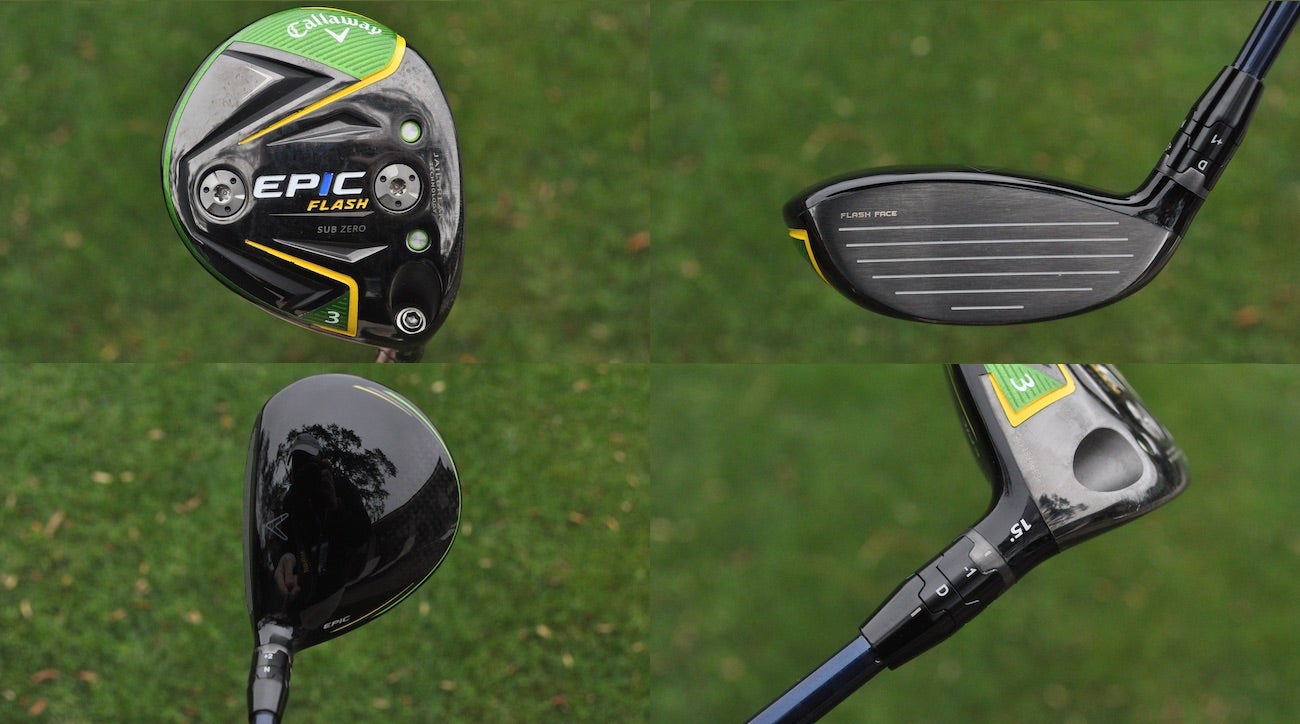
Other players have told me 3-wood is a difficult club to change out when you find one you like. Do you agree?
Molinari: Yeah, it is, because of the different conditions of the turf and off the tee. You need high, usually, off the turf when you’re getting into par 5s, and off the tee, you want to have a strong flight. So it’s finding a balanced compromise. My 3-wood last year, to be honest, was never my favorite club. I went to different heads and different lofts, trying to find something that would work better, and this has been really good.
I saw Fujikura’s Ventus shaft in the driver and 3-wood. Are those recent additions?
Molinari: In Mexico, In still had [Mitsubishi Tensei White], but I think it wasn’t quite spinning enough because the club head spins less. So In did some testing last week. [Ventus] was very good at home, now it’s about testing them today and tomorrow and seeing how it goes.
ORLANDO, Fla. — Francesco Molinari didn’t leave himself much time to bask in the glory of his dream season. Just months after he won the Open Championship, two marquee worldwide events and went a spotless 5-0 in the Ryder Cup, Molinari began the process of working his way into a completely new equipment setup.
Nobody would have blamed Molinari if he decided to stick with his previous setup, but after nearly three years as an equipment free agent, the 36-year-old felt it was time to make a move. Following months of extensive testing with Callaway representatives, he made the switch official at the Arnold Palmer Invitational, inking a multi-year deal for all 14 clubs and the golf ball.
During a recent sit-down with GOLF equipment editor Jonathan Wall at Bay Hill, Molinari went in-depth on his new equipment, why he felt it was time to leave the free agent market, and what surprised him the most about Callaway’s Chrome Soft ball.
Coming off a career year, how difficult was it for you to change every club in your bag?
Francesco Molinari: It wasn’t too difficult to be honest. Obviously, I was a free agent last year, and when it came towards the end of the season, I decided to try and test around a little bit, and see what different companies had in their portfolio. With Callaway, it was pretty much a dream start from the beginning. The guys in Europe were, when we started shopping, were obviously very happy for me to try new things. We started, I think it was around October time last year, before the Race to Dubai, and I was very impressed with the staff from the beginning.
The biggest question mark for me, in general, was the ball. It’s the most delicate thing to change and I was impressed and probably a little surprised. You always assume you’re playing the best, and when you test other things, it’s nice to get a little surprise. Pretty much from the start, the ball speed was better, the spin was very similar, the feel around the greens was a little bit softer. So it was a win-win situation.
So there was no emotional attachment to your previous setup?
Molinari: I’m lucky enough to be a guy that doesn’t get particularly attached to, emotionally attached to clubs. Even last year, I think I went through three different drivers and tinkering with the shaft weight a little bit. I’m pretty used to playing with something that looks and feels slightly new. It’s been pretty smooth so far.

How much equipment did you test as you were considering signing with a manufacturer?
Molinari: I had the experience of the, two, two and half years ago, when Nike got out of the equipment business, and for guys like me that have been with them for a long time, it was an opportunity but a challenge as well, because you all of a sudden were open to so many options that I started, at the time, with the idea to test as much as possible. And after two weeks, I realized that that wasn’t really possible because there’s so many variables, and you just, after a while, I think you get to a point when it’s just confusion, and there’s too much things going on to really understand. But this time, I didn’t test quite as much, partly because I had an idea from three years before of what was around.
But to answer your question, I did test a little more than just Callaway. The performance that I got with these clubs was clearly the best, so it was a good combination obviously for me to see the clubs that I like the most were from a company that obviously wanted to get involved with me, and that’s a nice feeling as well. To have someone that wants to work with you and at the last point, was probably that I saw in them, more than in anyone else, the will and the desire to get back there and to get me playing even better golf. I wanted to find someone that wasn’t just gonna say, “Oh, let’s keep everything the same because you had a great year.” So it was nice to see that same spirit in them, like I had in me.
What was that testing process like for you with the golf ball?
Molinari: Yeah, I think it was probably slightly easier than I thought. I had heard, in general, the reputation that the Callaway ball was quite a spinny ball, which, for guys like me, is probably not necessarily a great thing. The first testing we did in October was basically testing the new driver, the first few heads were just coming out, and the ball together; compare it with the driver ball combination that I had last year, and the jump in speed was immediate. So that’s the first positive that you see. And then, I just started back then when I was at home, playing around a little bit with the ball and comparing it with my old clubs, comparing to what I had. And I saw the spin and the performance were very similar, apart from a little more ball speed I was getting with Chrome Soft, which is always a good thing.
The other surprising thing was that the feel around the greens was softer than what I had. So if anything, it went smoother than I thought because all the important factors, like spin, and feel, and stuff like that, were fine. And on top of that, I was getting a little more ball speed. First week I played with it was in [Maui], where the wind there can be difficult, and it performed really well in those conditions. That really put me at ease.

Is there a go-to shot when you’re ball testing that you need to execute for it to pass the test?
Molinari: I’m quite a simple guy, so I tend to hit a few, maybe wedges, a few 8-irons, a few 6-irons and just go on up to the driver, just to see that the spin is in the right window where you want it to be. And then you compare ball speeds to see if they’re any different. So it’s not too complicated, but it’s not often that you find the ball that’s immediately in the right window.
What about driver testing?
Molinari: I had tested some Callaways two-and-a-half years ago when it was time for me to look at new equipment. I was pretty convinced that I was playing the best that was out there. So it was impressive and surprising to see the ball speed going up immediately on a consistent basis, on every shot.
When I sat down with the guys that were telling me about the different driver heads, and they immediately talked to me about the three diamond head that is the one that I’m using now, saying that they thought, from the initial testing, it was probably the one that most [Callaway staffers] would use. They brought me that and they brought me a couple of the other heads, but pretty soon, I realized that they were right and it was the best head for me.
What’s your optimal spin for a driver?
Molinari: I like it to be anywhere from 2,5oo to 2,600 RPMs. Obviously, for me, control is quite a big thing, so I don’t want to spin it too low, risking losing a bit of control. So because of that, we’ve had to change shafts in the driver and 3-wood. I think in general that they’re lower spinning heads than what I had before, which I think it’s a good thing for us players because you’re always kind of trying to keep the spin down. And if the spin is too low, you’ve got loft, you’ve got shafts, you’ve got many options to bring it back up to the optimal level. If they spin too much from the get-go, it’s many times harder to bring the spin down. So, yeah, it was, again, pretty easy.

You putted unbelievably last season. Was the putter the most difficult club to swap out?
Molinari: Last year’s putter had a special place in my heart. There was definitely an improvement in putting, but I think it was due more to the technical side, the technical work. But when you perform with one club in an area where maybe I haven’t performed so well in the past, it’s not so easy. So I had a chat with Phil Kenyon, my putting coach, and asked his opinion if he thought it was gonna be a problem, and he was pretty positive from the start. This is actually the first putter they gave me. I think it was, maybe November, December, back home in London, and seeing as they sent me a few different heads and different prototypes. But this has been so good that I’ll stick to it. The club head obviously is very similar to what I had last year.
Did the Stroke Lab shaft take any getting used to?
Molinari: Not really. The feeling is a little bit different, but again, it was pretty good from the start. So when you see you’re making putts and you’re controlling the speed, that’s all you want to see. The feel is different. You can feel it being more stable. I think about last year, especially longer putts, you could feel a little more movement in the shot, which is something probably you get used to. But it is now, feels like it is easier to deliver the clubhead where you want it just because it feels more stable. It’s an interesting feeling. I think it’s not often you see something really new in putters. It was great to have the chance to test it and then to use it. I think we’re seeing a lot of guys using it out here and it’s just because it’s better than what we had before.

You went from cavity-back irons to Apex MB muscleback blades. What made you move away from the extra forgiveness?
Molinari: I’ve been, on and off, playing blades throughout my career. I think what I found was that the last blades that I played with Nike were kind of in between blades and cavity backs, so when I switched to TaylorMade two years ago when I was testing, they just gave me a set of cavity backs. And I hit them, they were fine. I’m that sort of guy. If it works, I don’t get too into it. But then, once I started testing, we tested the blades, and the numbers were great. I loved the feel of the sole through the ground.
These [Apex MB] forged blades are made, I think, in Japan, so they’re slightly different from the standard muscleback. I had the standard blade at [the Sentry Tournament of Champions], so this is brand new. I played with it in Mexico. I got it three days before Mexico, hit them for two days, and then put them straight in the bag.
Did you add the Callaway Apex Pro 4-iron strictly for the forgiveness?
Molinari: I’ve got a blade 4-iron as well, but so far, I’ve been [the Apex Pro]. I need a little bit more ball speed as well to bridge the gap between the five and the utility. It’s a set up that I’ve had for, I think, three years now, without a 3-iron, just because I prefer to have more options down in the wedges.

Have you always used a setup with four wedges?
Molinari: I’ve been using four wedges for four years now. I used to have a 53- and 58-degree, but then I realized, I think that the way that the game is you hit a lot more drivers and wedges into holes. And it’s good to have tighter gaps and to make it easier down there, you can control the spin with different clubs.
I’ve really taken to the wedges. Even last year, I wasn’t contracted or anything, I decided to play the 60-degree, and it was very good. So then I’ve got 56 and 50, which is kind of more standard grinds than the S grind, just because I don’t use them that often around the green, to be honest. And if I do, it’s just for low bump and grounds, so you don’t play around with opening the club face. And it’s good to just have a straighter bounce.
Do you change your wedge gapping at all over the course of the season?
Molinari: I did last year. I used to have 52, 56, and 60. And then, this shows you who I am, on the Tuesday in Augusta last year, we were thinking that the gap between the 52 and the pitching wedge was too big, so I just switched into a 50 on Tuesday of Masters week.
I realize it’s an odd week to be making that change, but if it’s gonna be beneficial, you don’t wait. I’m lucky enough to be able to switch, usually pretty easily. So since then, the gapping has been the same and it’s been good.

Other players have told me 3-wood is a difficult club to change out when you find one you like. Do you agree?
Molinari: Yeah, it is, because of the different conditions of the turf and off the tee. You need high, usually, off the turf when you’re getting into par 5s, and off the tee, you want to have a strong flight. So it’s finding a balanced compromise. My 3-wood last year, to be honest, was never my favorite club. I went to different heads and different lofts, trying to find something that would work better, and this has been really good.
I saw Fujikura’s Ventus shaft in the driver and 3-wood. Are those recent additions?
Molinari: In Mexico, In still had [Mitsubishi Tensei White], but I think it wasn’t quite spinning enough because the club head spins less. So In did some testing last week. [Ventus] was very good at home, now it’s about testing them today and tomorrow and seeing how it goes.



